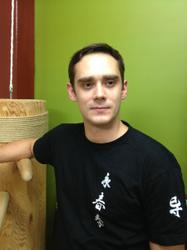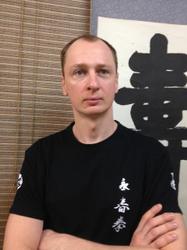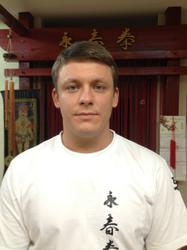Psychological Factors in Martial Arts
The different techniques and tactics attributed to every fighting system are based on its objectives while the objectives, in turn, reflect the system creator’s ideology and world outlook. Using aptitude tests people are especially selected to perform certain kinds of activity or sometimes to fulfill a certain task. There is no way of making the correct selection without first setting up some criteria and requirements to the psychophysical condition, a person’s way of thinking and world outlook.
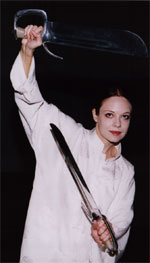 First of all, we would like to inform everyone that fighting systems and martial arts are not the same thing. Martial arts incorporate fighting systems along with personal principles which one would obtain while learning the systems and which would be followed throughout ones lifetime. Secondly, we claim that there are no Western martial arts. Complex firearms manuals along with hand-to-hand combat methods created in the West do not correspond to our definition of martial arts. Both Western culture and mentality happened to be poor stimulators of martial arts (similar to the Eastern types).
First of all, we would like to inform everyone that fighting systems and martial arts are not the same thing. Martial arts incorporate fighting systems along with personal principles which one would obtain while learning the systems and which would be followed throughout ones lifetime. Secondly, we claim that there are no Western martial arts. Complex firearms manuals along with hand-to-hand combat methods created in the West do not correspond to our definition of martial arts. Both Western culture and mentality happened to be poor stimulators of martial arts (similar to the Eastern types).
In contrast, the East was the most favourable place for martial arts to be born. Local mental and ethical ideas, aesthetic principles, religious and philosophical Buddhist systems (especially Zen Buddhism) corresponded to the principles of martial arts perfectly, thus making them an integral part of the Eastern culture. It was reasonable to perceive martial arts as assisting one to develop harmoniously. Genuine art implies spiritual perfection in the first place. Thus we have learned that Eastern martial arts are not just complex manuals and methods but, rather, a way of life. One need to spend ones whole life dedicated to the idea of self-perfection in order to achieve perfection. On the basis of the above information we believe that the East is the birthplace of genuine martial arts while the West has not (and could not have) created any form of martial arts.
What is the value of martial arts to people who live in today’s world where fighting skills are not needed by the vast majority? The point is that martial arts incorporate the complexity of a unique fighting system. It is a method of harmonious mental and physical development, an interesting hobby and a way to stay good and feel well.
People who have decided to go for martial arts are very different and it is very important to promptly evaluate their physical abilities and mental condition in order to properly understand their world outlook and identify why they have chosen martial arts. Let’s find out why people from different ages and social groups engage in martial arts.
Special agent training is merely a set of actions combined with a system of psychophysical learning which helps the agent fulfill his duty. If such an agent joins an Eastern martial arts school he becomes an ordinary pupil.
So, why start training in martial arts? How do martial arts influence its trainees?
A review of trainees` inquiries allows us to conclude that the primary motives are the obvious ones. They are as follows:
- The ability to defend
- The ability to attack
- Qualification advancing (for special service agents)
- Popularity and recognition through success in sports
- A kind of self-perfection
- Being in it for your-self’. This is one of the most important and most common motivations and is one of the advantages of Eastern martial arts. It is well ahead of other types of sports and special-forces training, particularly as many are attracted to Kata rather than sparring.
In the biographies of many famous Eastern martial arts Masters we often come across unsettled beginnings. This may take the form of crime, youngest in family, absence of parental guidance, physical disadvantages, etc. Their life journey is a display of various levels of psychophysical and social challenges.
Let’s put forward a rather seditious thought: a happy, healthy and fully life-satisfied person doesn’t need martial arts, particularly its fighting systems. He would rather do something less difficult and more mainstream which wouldn’t require as much effort. Something, which would be closer to amusement, for example playing golf, tennis, street-football or beach-volleyball. This is mostly symptomatic of those who get engaged with such activities at a mature age and voluntarily.
All martial arts, especially the Eastern forms, require the student to concentrate all of his spiritual and physical strengths, his great capacity for work, his patience and motivation and thoughtfulness. It is not surprising, therefore, that those who prefer amusements do not last long in martial arts study groups. Unfortunately they like to talk about how they succeeded in martial arts and of course how they were the best! As a rule, such masters’ are generally well read in popular literature but are shallow in philosophical judgement. They are quite condescending to real Masters.
A qualified instructor always spots one or more outstanding students in his group. They are so-called psychotic and accentuated people. We don’t mean psychotic in the clinical sense. Rather we mean the tendency to depart from the generally held path of the typical healthy person. When we say psychotic’ we mean a departure but within accepted norms. Our description is an exaggerated one, to some degree, simply to make it a more graphic example.
So the majority of psychotic people have some form of departure in the sphere of thinking activity, which manifests itself as a difficulty in diagnosing, an absence or unreliability of ones own experiences, partial non-criticism. In some cases these changes look like the rigid non-flexibility of deduction. In others, hasty and flimsy judgements, shallowness or thoughtlessness in decision making. In many cases instability raises its head in the form of rapid changes of interests, one-sidedness or unusual preferences.
Historically, from their very beginnings and a long time after, the majority of martial arts schools were considered closed institutions. They had a hierarchy, ritual systems and a set of values. Some attributes remained until current times and even developed further, for example the hierarchical and ranks (belts) system. So these schools represent a great psychological niche for people with specific psychic and accentuated personalities. Some people were mostly attracted to this closed quality’.
Returning to the psychotic origin we see how important is the role of external and environmental factors, such as bad up-bringing, alcoholism, parent illness, ideology of abuse and cruelty promoted by the media. Examples of environmental factors would be criminal situations in the area of the student’s residence. Let’s look in more detail at the students who possess a psychic departure from the norm. It is particularly with these students that problems in the educational process sometimes arise. But such people also want to engage in Eastern martial arts. That is why his instructor should know the specifics of their conduct.
Speaking about psychotics in any group, students with unusual thought processes can be identified. They are people who suffer from schizoid personality disorder, psychasthenic disorder and paranoid behaviour. Other examples of psychotics with emotional disorders are those suffering epilepsy, cyclical and hysterical disorders. The psychotics with prevailing will disorders are unstable, weak-willed with negative inclinations, etc.
What makes it more complicated is that there are no pure psychotic groups. Nevertheless let’s take a look at the main types of psychotic personalities.
Excitable type: the leading characteristics of this type of person are higher irritability and excitability combined with explosiveness. They are unforgiving, hypochondriac and have viscous emotional reactions. Against these main personal qualities several others may show, e.g., flattery, pedantry, neatness, hypocrisy. Persons of this group are most often recruited into martial arts schools because relatively high energy enables them to withstand high physical and psychological training loads. As well as this, a ritual strictness matches their main personal characteristics, compensating its weaker points and giving a feeling of security. But, due to the same characteristics, these students require a special control by their teachers and instructors. This is because cruelty, an unforgiving nature and explosiveness may lead to negative outcomes (leaving the school for example). Personalities of this group prefer the martial elements of power and strength. They prefer contact forms and directions in martial arts and other sports, as well as training methods and the rules of the combat conduct, where their perceived negative qualities and their psychic are welcomed.
Paranoid type: the leading traits of this personality are a particular bent towards overvalued ideals combined with lower psychic flexibility, suspicion and, generally, a raised self evaluation (normally cultivated and encouraged by their parents). They and their parents call themselves relatively extraordinary, well able, etc. From their childhood they will have diverse yet shallow interests and an over-valuation of their own abilities as they quickly grasp onto simple material with hyperstenic tendencies, which shows up as leader qualities. Such people are very sensitive to ignorance of their opinion and tend to exaggerate the importance of disagreements. They are highly susceptible. Characteristic of the egoist, they wish to act in their own way in every situation. Their peremptory categorical judgements prevent them from developing or maintaining any level of relationship in any group of people. People belonging to this group usually achieve very particular targets (to achieve with super-abilities, they often read about historical examples in popular literature; they study the touch of delayed death skill’, etc. This explains their wish to join a school with an esoteric name, for example: Poisoned Sword’, Bloody arrow’ or Black Ninja’ schools). They tour’ from one school to another, staying 2-3 months in each. They irritate their instructor by their multiple obtuse questioning and their intent to show their master-skills’ and get secret’ information. They spend time seeking attention and claiming leadership in a group based on their self-conceit and the shallow knowledge they gained earlier.
Hysteroid type: the main characteristic of this type is a striving to draw everybody’s attention to himself, whatever the cost. That is why the conduct of such people is characterised by being demonstrative, theatrical, lacking simplicity and totally unnatural. They crave being the centre of attention and need to be admired. Psychological immaturity and infantilism are natural for hysteroid personalities and often hinder them from achieving their aims by stifling the development of abilities they already possess. The main motive for attending training for such people is a craving to show other people their unusual qualities and originality, their extraordinariness, as they like to call it. With skillful tactics, the instructor gives his students specific tasks not requiring long lasting effort, then he praises them without fail so that a significant level of success may be achieved. At the same time the instructor’s indifference and lack of attention to real success will inevitably lead students like this to psychological failure.
Inhibited type: this psychotic type includes a group of personalities, in which significant elements are the astenic, the psychasthenic and schizoid characteristics. The reason for uniting them in such a group is the inhibited nature and passive character of reaction to various psycho-traumatic events. The unchangeable quality of such people is their emotional instability, lack of confidence, intolerance of physical and psychic loads, mood swings, tiredness, being out of sorts, etc. They show introspection and self-reflection tendencies. Such people often have high education levels and have the ability to learn despite a weak motor ability.
As a rule children with an inhibited nature are brought to martial arts schools by their parents. The also insist on continuation of studies despite their child’s open unwillingness. Parents in this case make a decision for their children, thinking that it will be better for him’ (from the authors’ own observation). Some of these inhibited types are able to master not-so-difficult programs of moves. They continue to study for years without achieving any success. Often represent stagnation, even for those students who arrive to the group later than them.
All of the above cause instructors to pay more attention to the specifics of each student’s personality. This will enable them to prevent unwanted excesses in the group (e.g., to eliminate emotional break-downs, conflicts, traumatism). They must choose the right interaction tactics with students to improve the atmosphere between students.
Let’s look at one more problem which instructors usually meet: the inability of a student to copy the instructor’s move. This happens due to the following reasons:
- student’s lack of physical preparation (insufficient joint mobility, poor tendon elasticity, poor muscle strength)
- lack of active concentration of the mind
- inability to correctly evaluate the receptors’ signals of ones own motor apparatus (muscles, tendons)
- lack of speed control, trajectory and coordination of move’s execution
- skills and explanations received in sports fighting groups and other martial arts with different coordination levels and principles
The first reason can be eliminated by special physical exercises, provided the limitation of ones joint mobility is not due to anatomical problems.
The other reasons can be eliminated by the use of methodical ways like technique detailing, the creation of physical penalties for incorrect technique performance, setting tasks and controlling the rhythm of exercises or increasing exercise repetition.
When planning lessons, we recommend that instructors correlate the requirements of the training program to the psycho-types of the particular students. This would enable them to foresee the result of achievements of each student, thereby achieving maximum effectiveness.
We could show many examples of how a student’s psycho type and their motivation to join the group affect the educational process. Like, for example, if a student is not aggressive by nature, it is useless to make him attack first. Counter-attack is more natural to him. If a student is physically weak and without an athletic build, yet is flexible, persistent, observant and quick thinking, he needs to be taught a cleaner’ and refined technique rather than a breaking through’ technique. If he came to the group only to learn how to fight, then he won’t last long (such students usually disappear after a second lesson, sometimes they have enough patience for two weeks) and he won’t pursue a Kikhon, Kata and Kikhon-Kumite. He won’t last full length during the lessons.
The psycho type of a student affects his attitude to his study and his results. With the right consideration of a student’s psycho type, a change in his attitude towards his study may be seen. It is especially clear when teaching children. Different children join the group. They are mainly healthy and happy. During the process of study they demonstrate their own psychic and education tendencies. This becomes particularly noticeable when studying unfamiliar moves. But it should be noted that systematic classes affect children’s psychic and education in a positive way.
If the one studying wants to achieve success seriously, he has to understand that the main reasons for his possible failures will be not external, but rather internal! They will be obstacles like instability, lack of attention, mood drops, a habit of thinking by stereotypes, self over-valuation, not enough perseverance, etc.
Without internal discipline in martial arts it is not possible to achieve a really high level. When a student convinces himself of this fact by his own experience, his aspiration to success in studies is a motivation to fix his character disadvantages. The most important thing is not victory over an opponent, not the avoidance of defeat, but the perfection of one’s character. In other words, a victory over one-self.
Doctor A. Zaitsev, psychotherapist, instructor in hand-to-hand combat;
A. Pleskachev, Leading Instructor of Moscow F.S.K.A, 5 DAN.



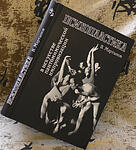

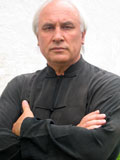 Коан – вопрос к членам Федерации Юн Чун Цюань от президента В.В. Мартынова: «Что Вы сделали для Федерации из того, что не мог бы сделать любой другой за деньги?»
Коан – вопрос к членам Федерации Юн Чун Цюань от президента В.В. Мартынова: «Что Вы сделали для Федерации из того, что не мог бы сделать любой другой за деньги?»
